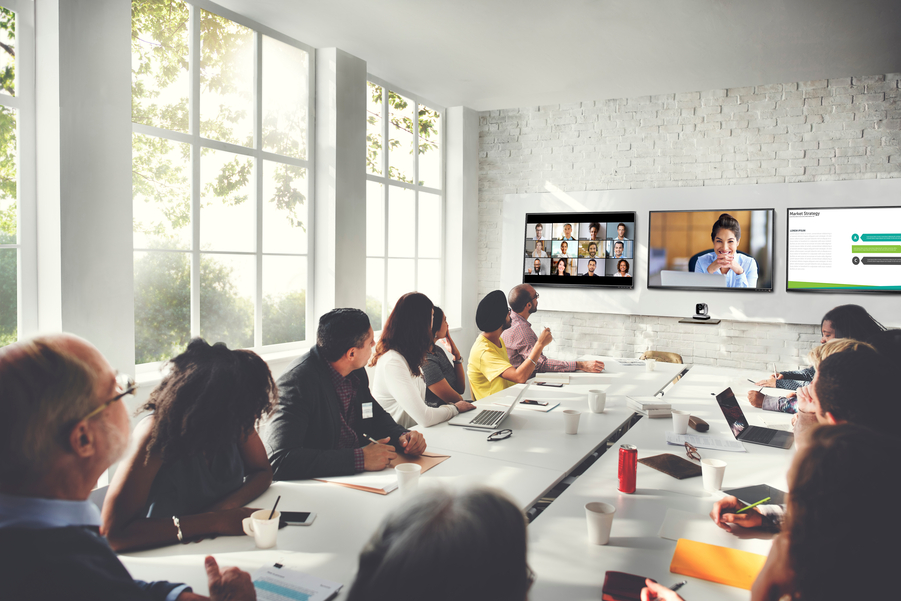
How the User Experience is Driving Modernization of AV Services
Consumer Technology and Software Has Changed User Expectations
Come with us, for a bit, for a walk back in time to the 1980s. That decade saw the dawn of the personal computing era. Until the advent of the personal computer (PC), computing power lay in data centers in mainframes and minicomputers. There were no such things as “apps,” but there were complex applications to run financial and operational aspects of companies.
Most importantly, however, before PCs (we mean all of them here of any operating system), the IT department controlled all that computing power. In those days, IT was called by many other names (sometimes not flattering ones), but generally, professional workers had little control over what IT did, and they might wait years to be able to take advantage of that computing power to make their job easier.
The PC changed the way people worked. New and relatively simple tools made it easy to write documents, presentations, and work with numbers in spreadsheets. Whole forecasting models could be developed on a PC that would require a professional programmer on a mainframe or minicomputer. Professionals were empowered to do things much more easily than ever before, spurring a huge increase in productivity. In the mid-1990s, the internet and its connectivity took it all to the next level.
Fast forward to the 2000s. At this point, everyone knows the story. Smartphones that are orders of magnitude more powerful than PCs of just ten years back now sit in everyone's pocket or purse. In 2009, rather early in the smartphone era, Apple started using the phrase "there's an app for that" in their advertising. In 2022, millions of apps exist in the Android and Apple app stores to do just about anything you can imagine that could benefit from using a computer, making that snappy slogan seem like a prophecy.
By now, you're wondering what all this has to do with audiovisual services? As technology has been consumerized, the expectations for every business or enterprise application have exponentially increased. Users want the same convenience, ease of use, and power that exists in the typical mobile app. Is there any self-respecting business application with no companion mobile app? It’s the same for AV, as many of today’s professionals think nothing of holding a Zoom videoconference with 20 people from a coffee shop on a tablet or smartphone.
These days, virtually everyone is an end-user with exposure to the latest apps and technology, so their expectations of what AV services should do is extremely high. They're accustomed to advanced technology at home, with smart lights, speakers, and wireless networking for everything. Even in a conference room, plugging in an HDMI cable for a presentation (got adapter?) seems so 2015.
So what does all this mean? Audiovisual services are increasingly all about software integration, and software is what makes all of it easy to use and work seamlessly. And just like IT departments learned to adapt and deal with the personal computer and the needs and wants of end-users, AV departments everywhere are learning to do the same – with a lot of software.
SEE ALSO: When Is It Time for Your Organization to Upgrade AudioVisual Equipment in Meeting Spaces?
The Curse of High Expectations
The consumer model of software updateable devices has permeated everything AV. The model for videoconferencing and collaboration now is Zoom, Microsoft Teams, and similar solutions. Click a link, start a meeting. Want to show a presentation? Click a button and share it. Need a side convo? Chat privately with someone or part of the group.
When users walk into a conference room, they don’t want a foreign system that makes them jump through hoops to start a meeting. They need a conference room system to blend right in with the way they work. That means that the equipment needs to be updated to the right compatible software, the network needs to be strong, stable, and fast, and no devices are malfunctioning. Otherwise, the AV department will incur the wrath of the user who expects the conference room to “just work.” After all, isn't there an app for that?
AV Is No Longer an Island
The new software-driven, IP-connected AV services are no longer an island unto themselves. Just like in all their other technology, users expect not only for things to work but to improve over time. They’ll demand integration of new software or support for certain devices like a new type of camera or audio capability. Or perhaps they’ll demand multiple displays and digital whiteboards that work with their preferred productivity and collaboration solutions. The AV department is now more like IT, needing to integrate software and hardware, manage network and security issues, keep device software continually updated, and provide support for a much wider range of technology than the projectors and speakerphones of the past.
How Will AV Services Evolve?
AV is no longer the province of proprietary hardware and software that only a specialized few know how to operate, like the mainframe and mini data center computers of the past. AV is mainstream technology, especially in this new era of hybrid work. In future posts, keep an eye on this space as we take a deeper dive into the evolution of AV services and how organizations and AV departments need to adapt.
Level 3 Audiovisual is an Arizona-based national managed services provider helping organizations of all sizes in Phoenix and across the U.S. design, deploy, and manage AV systems and infrastructure. Get started by reaching out to Level 3 Audiovisual here or click the chat box below to connect instantly. We look forward to working with you.

